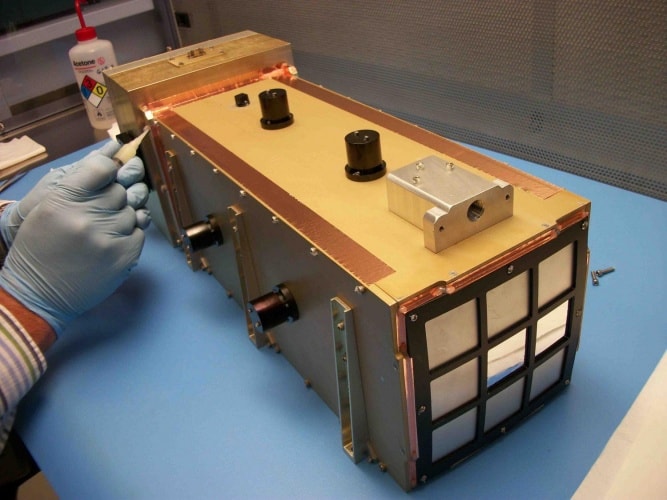An imaging system inspired by lobsters’ eyes could help to detect phenomena linked to space weather that damages space-borne instruments and electrical and communications infrastructure on Earth. Satellites carrying such ‘lobster-eye optics’ could soon be launched by ESA and the Chinese Academy of Sciences.

The solar wind — the constant stream of charged particles emitted by the sun — contains a proportion of heavy ions that interact with clouds of electrically neutral gas, given off by comets as they approach the sun, to create ‘soft X-rays’ (radiation with an energy of 100eV to 10keV). This radiation can interfere with communications systems and cause problems with electrical infrastructure on Earth.
NASA has built on simulations created by Tom Craven and Ina Robertson of the University of Kansas to devise an optical element that can focus soft X-rays across a wide plane of view, which would allow researchers to observe events in the Earth’s magnetic field when the solar wind interacts with residual atmosphere to create soft X-rays.
This optical element, devised by Leicester University and Photonis in France, “consists of an array of very small square glass pores 20 microns on a side curved like a section of a sphere, with a radius of 75 centimetres,” explained Michael Collier, an astrophysicist at NASA’s Goddard Space Flight Centre and lead author of a paper in the journal Review of Scientific Instruments. This mimics the optics in a lobster’s eye.
Having such a system in space “takes us one step closer toward global solar wind and magnetosphere imaging capabilities,” Collier said. “Because all of the energy that powers dangerous space weather events comes from solar wind, this capability allows us to better protect our space assets—particularly geosynchronous spacecraft, such as those that carry cell phone signals.”
The optics could be easily mounted in a small CubeSat satellite, the researchers state, and would be suitable for a mission called “Solar Wind Magnetosphere Ionosphere Link Explorer,” (SMILE), being planned by ESA and the Chinese Academy of Sciences for a launch in 2021, that will include a wide-field-of-view soft X-ray imager featuring Lobster-Eye optics from Leicester University. “The goal of this mission is to perform global imaging of the solar wind and magnetosphere interaction—something that has yet to be achieved,” said Collier.




Swiss geoengineering start-up targets methane removal
No mention whatsoever about the effect of increased methane levels/iron chloride in the ocean on the pH and chemical properties of the ocean - are we...